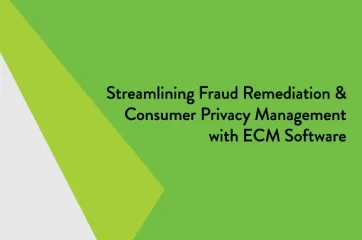Loan documents include all the documents that are necessary for a financial institution to make a loan to its account holders, including the promissory note.
In particular, loan documents serve as a legal and binding contract between the institution and a borrower, detail the terms in which the borrower must repay the debt, and provide a way to secure collateral that is pledged on a loan.
Sources of Loan Documents
Typically, there are three primary sources of loan documents. Sources of loan documents include:
Account Holder-Provided Loan Documents
The first source of loan documents is the customer or member, which could be an individual, small business, or another type of entity. Account holder documents provide important details about the person or entity that is applying for the loan.
Financial Institution-Provided Loan Documents
The second source of loan documents is the bank or credit union itself. Depending on the loan, a promissory note, deed of trust, security agreement, agreement to provide insurance, and UCC financing statement may be generated during the loan process. Many banks and credit unions utilize document preparation software to generate these types of documents.
Loan Documents Provided by Third Parties
Another source of loan documents may include third-party professional service providers, such as attorneys, land surveyors, and appraisers. Examples of such documents could include appraisals or surveys.
Consumer vs. Commercial Loan Documents
Different types of loans require different types of documents. For example, some consumer loans may only require an application and a pay stub, while a complex commercial loan typically requires large amounts of account holder-provided documentation, such as formation documents, business plans, and in-depth financial statements.
Check with your bank or credit union’s compliance team to ensure each loan is properly documented and in compliance with state and federal documentation requirements.
Transforming Loan Document Management
In the past, bankers had to cart around bulky paper folders that were packed full of loan documents. Once the loan closed, the next challenge became figuring out where and how to securely store them.
Today, all loan documents can be neatly stored and organized in an intuitive, searchable format. A core-integrated document management system, such as AccuAccount, streamlines the management of loan documents by ensuring that all required elements are present in the file. Loan documents and exception reports are also accessible to multiple personnel simultaneously. Digitizing loan documents allows banks and credit unions to reduce paper and long-term storage costs.
Learn More about Loan Management
Download a loan management eBook or spreadsheet from Alogent’s Innovation Hub. You can also read more banking definitions or download the banker’s glossary.














